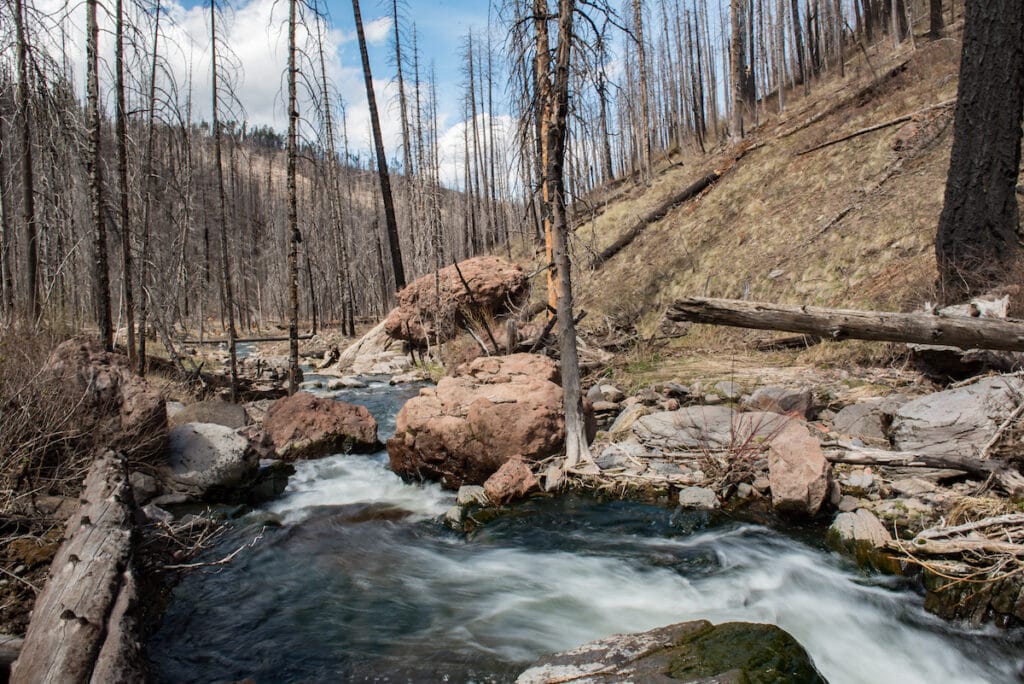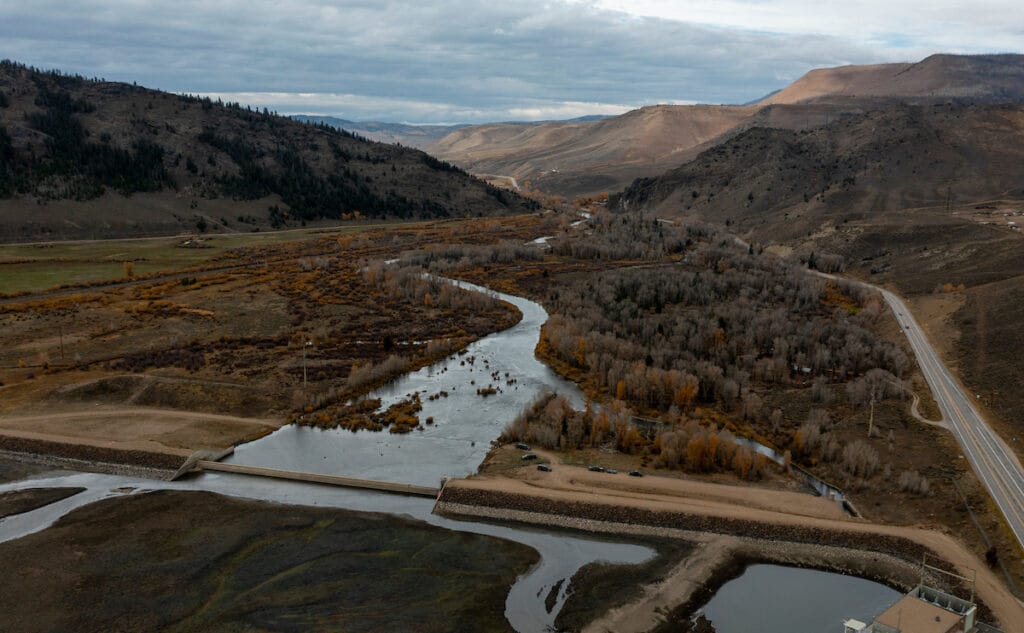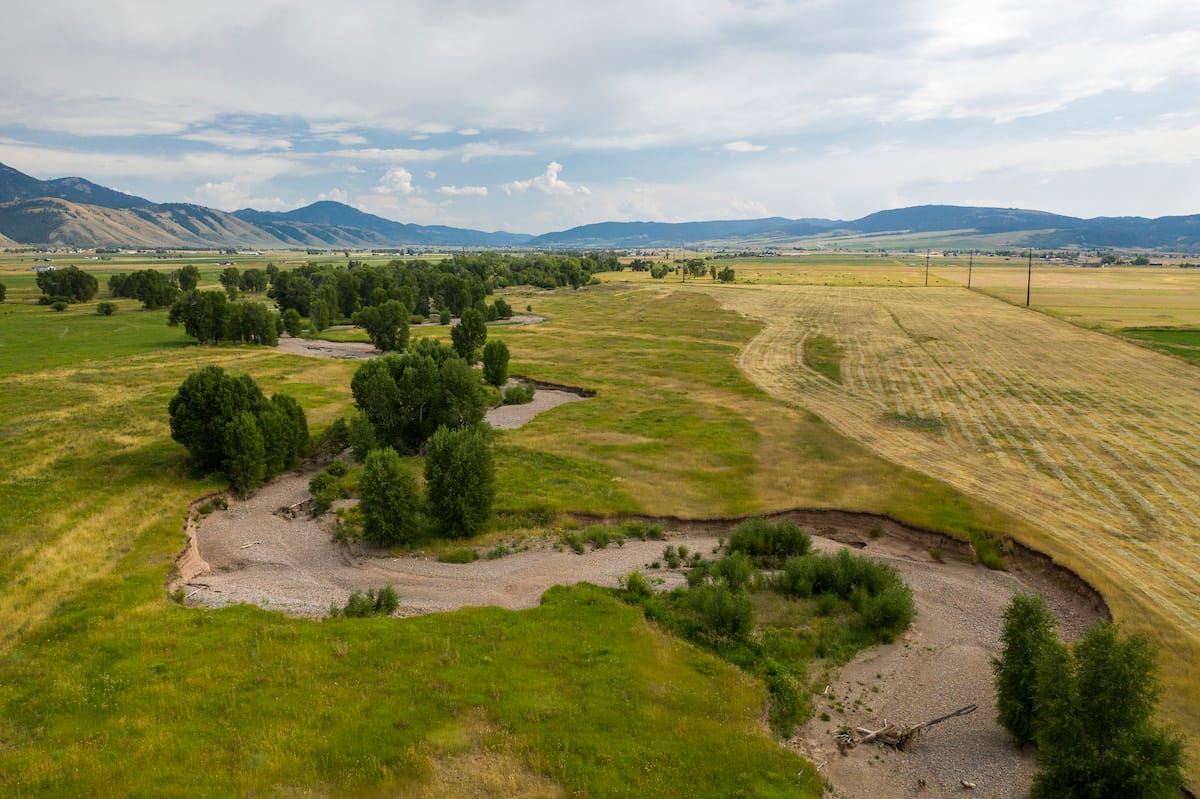These are the dog days of summer.
A stretch of continued hot weather and low precipitation left communities on the Front Range of Colorado, where I’m writing from, threatened by several wildfires that popped up at the end of July. These fires are a vivid reminder of what others across the 11-state western region are facing; where nearly 70% of its lands are currently experiencing conditions that range from abnormally dry to exceptional drought.
For commodity producers, drought threatens crops, livestock and ultimately their livelihoods. For trout, drought dwindles in-stream flows and reduces available habitat of cold, oxygenated water. And for communities, drought increases vulnerability to wildfire and water scarcity brought on by climate change.

So, what is Trout Unlimited doing to help build drought resiliency into local watersheds?
Across the West, we are working with landowners and partners, like the US Department of Agriculture Natural Resource Conservation Service (USDA-NRCS), to meet the challenges brought on by drought to improve ecological and community resilience. No two projects are the same and sometimes big impacts come from small projects. For TU, those projects include:
- In the Gunnison River Basin and Rio Grande River Basin, TU is using the Conservation Innovation Grants program to test innovative auto-tarp technology that allows irrigators to remotely control headgates for more efficient water application.
- In Wyoming, TU is using the Environmental Quality Incentive Program (EQIP) and working with irrigators to more efficiently irrigate farmland to increase in-stream flows and reduce salt loading.
- In the headwaters of the Colorado River, TU and a collection of partners used the Regional Conservation Partnership Program and the Watershed and Flood Prevention Operations Program to build a natural river channel around Windy Gap Reservoir for the purpose of improving aquatic habitat in the Fraser and Colorado rivers.
- Throughout Utah, TU is using EQIP to re-stabilize riverbanks and better manage streamflow for naturally distributed storage and improved on-channel stream flows and function.
All these examples have been funded through existing USDA-NRCS programs, including projects in the West funded through the Inflation Reduction Act, which is why a new $400 million investment from USDA offers an exciting opportunity to build greater drought resiliency across the West.

On August 1, USDA announced $360 million will be invested through at least 18 irrigation districts in 12 western states, with an additional $40 million set-aside within the program for to-be-determined tribes and acequias, to voluntarily reduce water consumption in commodity production. USDA expects to conserve up to 50,000 acre-feet, or over 24,000 Olympic-size swimming pools, for those with Olympics fever, through this new program.
The infusion of money through USDA is welcome but is just one tool in a bigger toolbox being deployed in the West. Through USDA’s Western Water and Working Lands Framework for Conservation Action, the agency is investing in producers and communities to help conserve water, address climate change and build drought resilience to the tune of $2.3 billion. That is a lot of potential for water savings when coupled with existing programs.

Producers will keep producing but more water will be conserved through efficient farming practices and water savings technologies. More water conserved means more reliable in-stream flows for trout. Producers win. Partners win. Trout win. A win-win-win.



